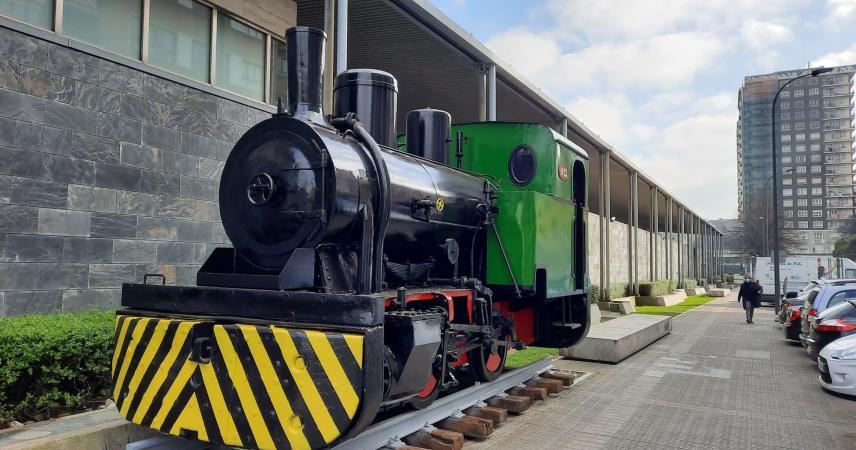The railways were an essential part of the steel industry, where they were used to carry iron and other raw materials. The internal rail network at the Altos Hornos de Vizcaya (AHV) steel plant was one of the biggest in the country.
The onset of the Industrial Revolution brought steel-making to the Basque Country. 1882 saw the incorporation of steel makers Altos Hornos y Fábricas de Hierro y Acero de Bilbao in Barakaldo and Sociedad Anónima la Vizcaya in Sestao . They were joined in 1887 by La Iberia. With such a high volume of activity in the area, an efficient rail network to connect the mills with the mining areas became essential.
The three big steel companies merged in 1902 to form Sociedad Altos Hornos de Vizcaya.
In 1913 AHV purchased two locomotives from the German company Borsig for the line between Sestao and Galdames, where iron and limestone were loaded. In the 1920s the rail network had to be upgraded to cater for the expansion of AHV. This led to the purchase of 4 more locomotives from the same company in Germany in 1921.
Along with the locomotives themselves, the company bought the blueprints and a licence that enabled it to build more of the same model at its own plant. This resulted in the building of around 30 locomotives based on the 133 HP Borsig design, one of which is on show here.
Their small size enabled these locomotives to negotiate the tights turns on the tracks inside the mill facilities.
In the 1950s diesel units were introduced, but some steam locomotives remained in service until the 70s or even later. The one that we have here in Santurtzi was not decommissioned until 1983.
